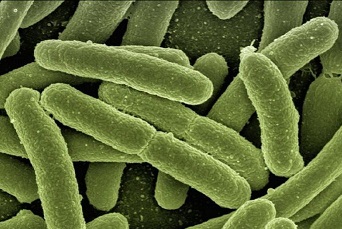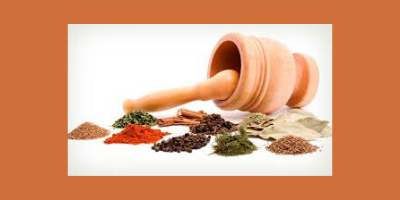Nappy rash may be caused by the chemicals and bacteria in the baby’s urine and faeces, but it can also be caused by detergents which may not have been fully rinsed out of nappies during washing, or it can be caused by some throw away brands that does not agree with your babies skin.
In today’s times about 70% of mum’s use the throw away ones nappies as they find it much easier.
If you listening to this program, you’re probably sharing the nappy rash experience right now. So here are some tips to help you and your baby:
REMEDIES ON NAPPY RASH.
1. A good covering of zinc and castor oil cream, vitamin E cream, E45 cream or a neutral white wax barrier cream.
2. Fissan paste works well after every nappy change.
3. Vaseline also works well.
4. Maziena filled in a powder container, can be sprinkled after every nappy change.
5. The oldest advice is sometimes still the best. Give your baby’s bottom some air. Simply take baby’s nappy off, and lay him chest down, with his face turned to one side, on towels under laid with a waterproof sheet. Leave the baby that way for as long as you’re there to keep an eye on him.
6. Did you know that breast-fed babies have less nappy rash than bottle-fed babies. Even better, research has shown that this resistance continues long after a baby has been weaned.
COLIC.
Ancient scholars first described infantile colic in the sixth century. Modern parents have no trouble describing it today. The baby cries, pulls his knees up to his abdomen and appears to be in great pain. He may become windy, then become quiet, then begin crying.
Nothing much seems to have changed over the centuries, and nothing much seems to help. Colicky babies cannot be quieted with feeding or a change of nappy, and episodes may last for many hours. Colic tends to be most severe at 4 to 6 weeks of age and gradually subsides by 3 to 4 months.
REMEDIES ON COLIC.
• Try the colic carry: extend your forearm with your palm up, then place the baby on your chest down, with his head in your hand and his legs on either side of your elbow. Support the baby with your other hand and walk around the house with him in this position. It definitely helps.
• Burp that babe: “my experience is that at least some colicky babies do have more abnormal wind than the norm and may be more difficult to burp”. Says a pediatric practitioner.
Watch the position of the baby when feeding and burp frequently. When bottle feeding, burp after every 25 milliliters, and try a variety of nipple types.
• Cut the cow juice: many child-care specialists believe colic is caused when cow’s milk is transmitted from mother to infant through breast milk. It is recommended that mother’s start by eliminating milk from their diets and see what happens.
• Gripe water: this is the old-fashioned patent medicine for babies. Anxious mothers with indigestion should also take a large spoonful.
• Warm water: 1 tsp of boiled water from the kettle will help.
• Fennel seeds that also called saumf: older babies suffering from wind or colic will respond well to the seeds boiled in a little milk for 5 minutes then strained.
• Carrots and fennel (saumf): 1 carrot sliced with a small piece of fennel and cooked very gently until soft then strained and mixed with a little honey can be given to fractious infants who are starting solids.
• Rooibos tea is also excellent for colic.
• Most importantly breast-fed mothers should watch their diet and avoid: beans, dhalls, cabbage and all foods that would upset baby’s stomach.
WHOOPING COUGH.
Until recently whooping cough was one of the most prevalent and alarming of childhood illnesses, not only because of its immediate and unpleasant effects but because of the far-reaching consequences it could have upon children’s health if they are not nursed and convalesced with care. It is not uncommon for youngsters to be left with damaged lugs and permanent vulnerability to infection. Small babies were and are still at risk and if you have a child of school age in the same house as a baby and you know that whooping cough has been diagnosed in the area do your best to keep them separated.
The first signs are a feverish cold and an unpleasant cough although the horrible whoop as they fight fro air after a bout of violent coughing does not become apparent for about a week. Always seek professional help.
REMEDIES .
• Thyme: infuse 25g of thyme in 600ml of boiling water, strain and take with honey. 1 tblsp 4 x a day for older children and 1 tsp for babies.
• Lettuce: simmer 1 cleaned head of lettuce in 600ml of water for 20 minutes. Drink the liquid 3 x a day.
• Onion and honey syrup: 450 g onions 225g garlic 600ml sunflower oil 150ml honey
Peel and finely slice the onions and garlic and out them in a covered dish with the oil. Cook slowly in a low oven until very soft. Strain well and add the remaining ingredients. Bottle and seal. Shake before using for children over 2 years and up to 4 give 1 tsp 3 x a day.
• Ginger is another effective remedy for whooping cough. A tsp of fresh ginger juice, mixed with a cup of fenugreek – methi and honey to taste is an excellent cough syrup.
• Grape juice or grapes eaten on its own is also excellent for coughs.
• Honey and cinnamon can also be given.
• Turmeric – Arad mixed in a glad of warm milk and some honey added to it also helps.
• Garlic: it would be very hard to find any ailment that garlic does not come to the aid off. Chop 6 garlic cloves very finely and place them in a bowl over a pan of simmering water with the contents of 1 small jar of white Vaseline. Cover and leave to simmer gently. Repot and use to rub on chest and back. This is excellent for all types of coughs, cold and chest infections.
• Alternatively mix garlic oil and Vaseline together. This makes the same rub.
• An excellent rub: to a ¼ cup of olive oil add 1 drop each of the following warming antiseptic oils: eucalyptus, pine, cinnamon and clove. Mix together and bottle. Use to relieve congestion by massaging it into the afflicted area of nose, sinus. A few drops on the pillow will help children breath easily.





0 Comments